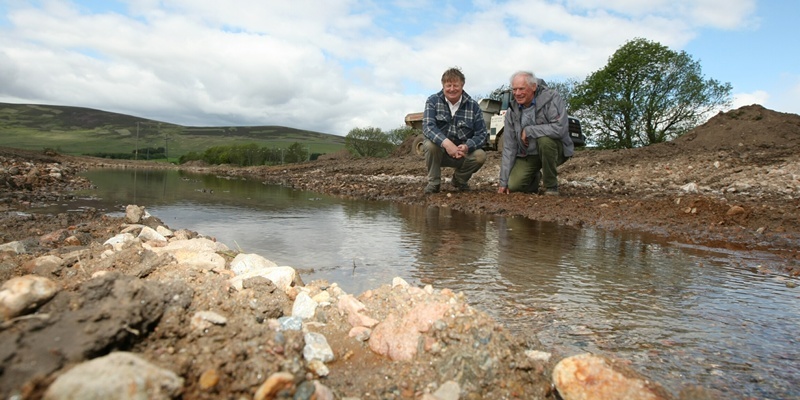Modern machinery has almost completed its work bringing history to life in an innovative Angus environmental project.
Against the backdrop of Glen Clova, contractors have spent weeks reforming the meandering path of the Rottal Burn, a spawning tributary of the River South Esk.
The £150,000 scheme is carried out by the Esk Rivers and Fisheries Trust (ERFT) to develop the habitat for not only salmon and sea trout but also species which could include the rare freshwater pearl mussel, birdlife and plants.
Near the road leading into Glen Clova, the project is focused on wetland alongside an 800m stretch of the burn, canalised in the early 1800s for flood prevention.
While effective, it gave young fish little chance of survival and the ERFT initiative aims to develop a new habitat in the 21st-century recreation of the burn’s ancient course.
Angus councillors gave the green light for the scheme earlier this year and ERTF director Dr Marshall Halliday and chairman Tom Sampson visited this week to view progress, with the first phase of carving out the new route nearing completion.
Old maps, aerial photographs and topographical surveys were used to determine the path of the new channel, which runs for around 1.2km 400 metres longer than the stretch it will replace.
Dr Halliday said: ”The canalised burn was dredged out in 2003 and that destroyed a lot of habitat, creating a high-energy system.”
Salmon and sea trout spawn in the burn, but with few areas for the young fish to develop they are washed away and lost.
The scheme will develop a more natural environment for young fish, giving them a greater chance of survival.
With excavation by north-east contractor McIntosh of Echt almost complete, the burn will be left until the end of August to allow vegetation to take hold, with tree-planting also part of the plan.
A trickle of water will be run into the new course until the break-in of the canalised section planned for early September.
Dr Halliday praised the co-operation of Rottal Estates in the project, which received financing from the SEPA restoration fund and also involved consultants EnviroCentre.
At the planning stage, both Scottish Natural Heritage and the Cairngorms National Park Authority signalled their support.
Dr Halliday said: ”It is going to be a fascinating project to see how it all develops.”
Mr Sampson said: ”The canalised Rottal Burn was not a good habitat for young salmon and sea trout and we are trying to create a much better environment in what is by far the biggest project the trust has undertaken.”
